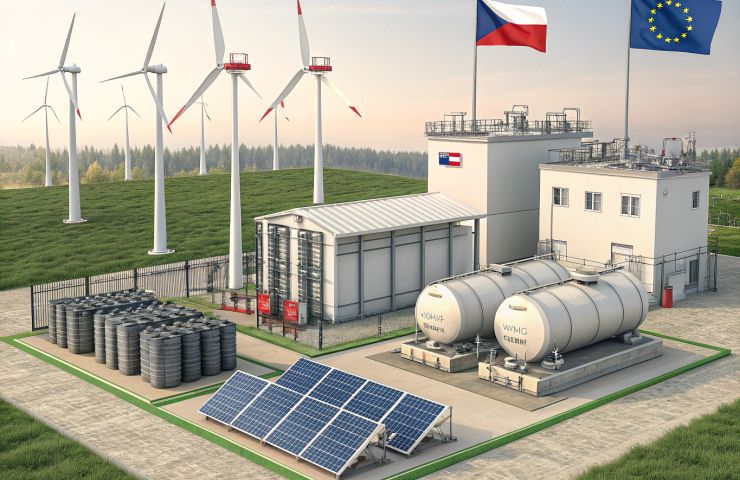
Poland Secures EU Recovery Funds for ORLEN Projects
October 8, 2025On 16 June 2025, Poland pulled in 1.7 billion zloty (€370 million) from its National Recovery and Resilience Plan—backed by the European Union—to supercharge green hydrogen projects under ORLEN’s banner. This isn’t just pocket change; it’s a clear signal that Poland is ready to swap coal and oil for a cleaner, sustainable energy mix.
- Who: ORLEN, the state-owned energy powerhouse steering the ship.
- What: A big bet on green hydrogen development, courtesy of Poland’s EU recovery package.
- When: Deal inked on 16 June 2025.
- Where: Production hubs peppered across Poland, with pipelines stretching into the Czech Republic and Slovakia.
- Why: To slash carbon emissions in industry and transport and nail those EU climate targets.
Funding and Scope
This EU cash will roll out in tranches, kicking off with feasibility studies and engineering designs before moving on to building modular electrolyzer units. ORLEN’s aiming high: 900 MW of electrolytic hydrogen capacity by 2035, which would make it one of Central Europe’s largest green hydrogen ventures, not just a token pilot. The plan is to fire up the first phase by 2027, then ramp things up through 2030 to feed refineries, chemical complexes and transport hubs with clean fuel.
Technical Overview
At its core, it’s all about electrolysis—a hydrogen production method that uses renewable electricity to split water into hydrogen and oxygen. ORLEN is testing both alkaline and proton exchange membrane (PEM) electrolyzers. Alkaline tech is a reliable, cost-friendly option per MW, while PEM units can ramp up or down on a dime—ideal for smoothing out fluctuations from solar and wind. Power will come straight from dedicated solar farms and wind parks, guaranteeing a carbon-neutral chain from sun and breeze all the way to the final product. When renewables overshoot, the electrolyzers kick into high gear, gulping down the surplus. The hydrogen then gets stored in high-pressure tanks before cruising through upgraded pipelines to markets in the Czech Republic and Slovakia.
Industry Applications
Swapping out gray hydrogen—usually made from natural gas—with green hydrogen in heavy industry is a centerpiece of ORLEN’s strategy. Refineries in Płock and chemical sites around Gdańsk could cut CO₂ emissions by up to 90%. On the horizon, local steel makers, long eyeing hydrogen as a low-emission feedstock, could tap into this cleaner supply chain.
Transport and Infrastructure
On the transport front, hydrogen fuel cell technology offers a zero-emission option for heavy-duty trucks and regional rail lines. ORLEN plans to pilot refueling stations along key logistics corridors, turning its service station network into multi-modal hydrogen infrastructure hubs. Upgrading pipelines and storage also lays the groundwork for a broader network, helping Poland and its neighbors build out a robust hydrogen ecosystem.
Energy System Flexibility
Here’s a neat trick: stored hydrogen acts like a giant battery for the grid. When solar and wind output spikes, electrolyzers chomp up the excess electricity, cutting curtailment. Later, hydrogen can be converted back into power via fuel cells or turbines, keeping the lights on during lulls. It’s a game-changer for overall system resilience.
Challenges and Risks
Building out hundreds of megawatts of electrolyzers comes with a hefty price tag—hundreds of millions of zloty per installation. Getting guaranteed volumes of renewable electricity is its own uphill battle, with solar and wind projects racing to meet multiple decarbonization targets. Meanwhile, global demand for critical components—membranes, catalysts, power electronics—is surging, which can mean long lead times. Add potential delays in grid-connection permits and environmental approvals, and you’ve got a real recipe for cost overruns and schedule slips. If these hurdles aren’t tackled head-on, Poland’s hydrogen roadmap could stall and investor confidence might take a hit.
Regional Collaboration
Poland, the Czech Republic and Slovakia share more than just borders—they all have heavy industries primed for low-carbon hydrogen. ORLEN’s pipeline linkages will connect with Czech rail freight routes and Slovak industrial parks, setting the stage for a Central European hydrogen hub—think of it as the Visegrad “hydrogen triangle.” Joint procurement of electrolyzers, harmonized regulations and shared infrastructure funding could push unit costs down and speed up market growth across borders. Everyone’s watching to see how quickly ORLEN navigates these cross-border challenges—it’s a real test of industrial ambition and technical savvy.
Historical Context
In the wake of the 2020 pandemic, the EU’s Recovery and Resilience Facility funneled billions into member states with a clear mandate: invest in climate-smart growth. Poland, historically coal-dependent, carved out a hefty slice for decarbonization. Over the past five years, ORLEN has transformed from a hydrocarbon-focused refiner into a renewables player—adding 2 GW of solar and wind capacity and exploring biogas—setting the stage for this leap into hydrogen.
Looking Ahead
Securing the grant is just the opening act. Next up, ORLEN needs to pick electrolyzer vendors, seal power purchase agreements for renewable electricity, and align pipeline operators across borders. If all goes to plan, we should see groundbreaking on the first green hydrogen sites by late 2026. From there, scaling up to that 900 MW goal hinges on smooth project execution, supportive regulations and steady capital deployment.
About the Company
ORLEN is Poland’s state-controlled energy giant, covering oil refining, petrochemicals, renewable energy and now green hydrogen. In 2024, the group reported revenues north of PLN 200 billion and managed over 2 GW of installed renewables. Its ambitious target: 900 MW of hydrogen production capacity by 2035, underscoring a long-term shift toward sustainable energy.
Sources:



 With over 15 years of reporting hydrogen news, we are your premier source for the latest updates and insights in hydrogen and renewable energy.
With over 15 years of reporting hydrogen news, we are your premier source for the latest updates and insights in hydrogen and renewable energy.